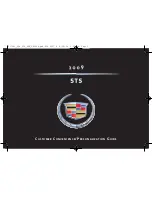
5-speed Manual Transmission
5-speed Automatic Transmission
Rear-wheel Drive
Solid Rear Axle
Differential
Emissions
PERFORMANCE/HANDLING
This page is about:
2006 Mustang
Performance/Handling
Mustang
Mustang
10
July 2005
Ford Car Source Book
194248
File Name:
06 Mustang SB
Pg# 10
Step: ______ Date: _________
Account Exec:
P.Miramonti
Art Director:
C.Burger
Operator:
A.Rice
Proofreader: _________
Rear-wheel Drive Specifics
Rear-wheel Drive
• Provides excellent handling characteristics and balanced
performance, especially through turns, thanks to a more
even front-to-rear weight distribution compared to front-
wheel-drive systems
• Provides better steering and handling by spreading tire
loads to all four tires, compared to a front-wheel-drive
system where both steering loads and acceleration loads
are on the two front tires only
• Eliminates torque steer — the annoying pulling to the left or
right during hard acceleration in a front-wheel-drive vehicle,
which is caused by the imbalance of driving force between
the front wheels
Solid Rear Axle
• A solid rear axle maintains constant track, toe-in and
camber relative to the road surface and keeps body roll
well under control
• It offers better off-the-line performance
• Mustang’s differential-mounted central upper control arm
helps prevent axle windup
• Solid rear axles are typically more robust than an
independent rear suspension design and can more
effectively handle large amounts of torque to the rear
wheels
• Rear axle ratio is more easily changed by racing
enthusiasts seeking more performance
• A rear-wheel-drive/solid rear axle configuration is a key
purchase motivator for enthusiast Mustang buyers
Differential
• Mustang GT’s 8.8-inch, Traction-Lok limited-slip differential
with 31 spline axles provides quick, responsive, off-the-line
starts as well as improved traction on loose or slippery surfaces
• Mustang GT’s high 3.55:1 rear axle ratio with a manual
transmission and 3.31:1 with an automatic are especially
suited to high-performance driving, providing excellent
off-the-line acceleration
• All other Mustangs get a 3.31:1 final drive ratio for
excellent launches and smooth highway-speed cruising
Transmission Specifics
5-speed Manual Transmission
• The Mustang manual transmissions offer performance-
oriented shifting for the driving enthusiast
• The 5-speed manual transmission is standard on the V-6
and GT, with the V-6 getting the Tremec T5 while the GT
gets the Tremec TR3650 — each is tuned to the powertrain,
offering improved shift quality and efficiency
• Both transmissions offer remote shift linkage that improves
quick gear engagement and a solid feel without “notchiness”
• The boosted hydraulic clutch improves clutch engagement and
reduces pedal effort while still offering a performance feel
• The V-8 clutch is designed to handle 300 horsepower and
320 lb.-ft. of torque
• For improved balance and reduced lash, both transmissions use
a flange coupling to the driveshaft instead of a splined connection
• Fifth gear overdrive reduces engine rpm at highway speeds
for increased fuel economy and quiet operation
5-speed Automatic Transmission
• This automatic features closely spaced ratios to keep the
engine in its powerband to produce better acceleration,
especially under wide-open throttle
• A 5-speed automatic transmission has more gears to work
with than a 4-speed automatic. Mustang’s low first gear
provides quick off-the-line acceleration and the wide ratio
span helps keep the engine in its “sweet spot,” the optimal
range for maintaining its highest output. The 5-speed
transmission also has a tall overdrive gear, which benefits
highway fuel economy
• Powertrain control computer precisely controls shift duration
and timing based on a variety of inputs, including throttle
position, engine speed, load, environmental factors and a
host of other parameters
• The 5-speed automatic transmission is optional on both the
V-6 and GT
NOTE:
For feature availability, refer to the latest Dealer Ordering Guide.
A Closer Look: Emissions
All Mustangs have a catalytic converter that helps reduce
vehicle emissions. All Mustangs are certified to either federal
Tier 2 Bin 5 or are certified as ULEV II or LEV II in California,
Maine, Massachusetts, Vermont and New York.
Mustang has an Electric Returnless Fuel System, which uses a
high-pressure pump to deliver fuel to the injectors at variable
pressure, depending on demand. The system does not require
a fuel return line from the engine to the fuel tank, thus reducing
the amount of fuel tank vapor. This system helps lower
evaporative emissions.
06 Mustang SB 8/31/05 4:00 PM Page 10











































